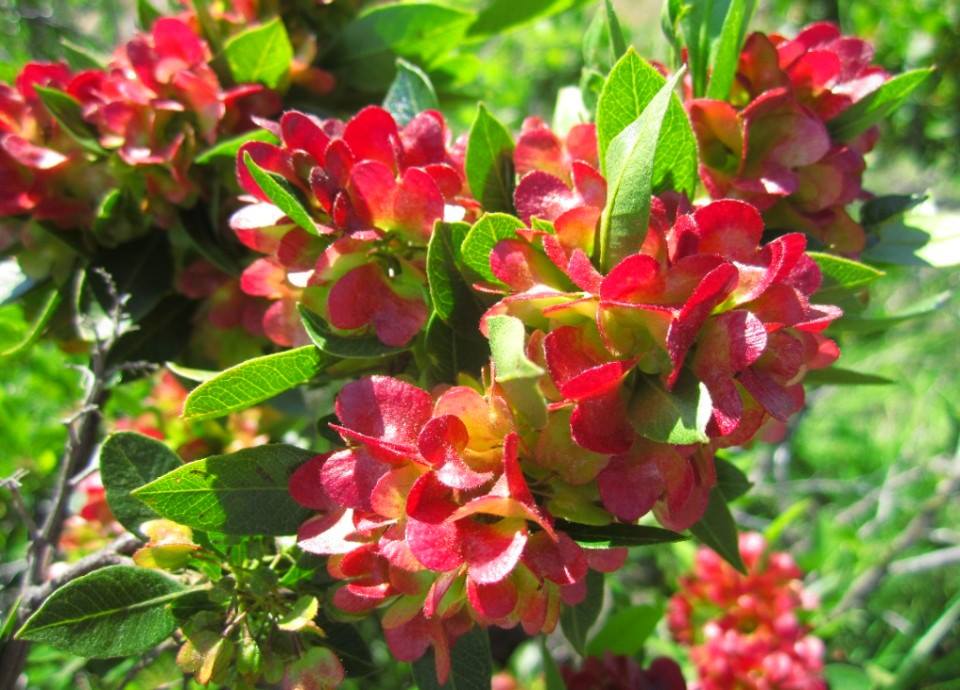‘A‘ali‘i is a member of the Soapberry family or Sapindaceae. Occurring naturally from sea level to 8,000 ft. elevation, ‘a‘ali‘i can be found on all of the main Hawaiian Islands. This species is very abundant in the dry forests of Hawai‘i, occurring as a pioneer species (first to grow on new lava flows) and as a dominant species in the climax forest. Characteristics for ‘a‘ali‘i can be quite variable with habit ranging from low lying shrub to small tree and flower and fruit colors ranging from a pale green/yellow to deep burgundy red. The male and female flowers can occur separately on one plant, on separate plants, or as one “perfect” flower (both male and female reproductive parts on the same flower).
In a landscape setting, ‘a‘ali‘i can be used as a specimen plant, hedge, or wind block. Perfect for xeriscaping, this drought-tolerant plant needs minimal water once established. As a wind block, ‘a‘ali‘i is known for being deeply tap-rooted and able to stand tall in even the windiest conditions! Historically, the ‘a‘ali‘i was used in tool making, as medicine, as a dye, and as a bait stick used for fishing. The fruit is used to create beautiful lei and floral arrangements.
As mentioned in the following ‘Ōlelo No‘eau: He ʻaʻaliʻi kū makani mai au; ʻaʻohe makani nāna e kulaʻi. #507 I am a wind-resisting ʻaʻaliʻi plant; no gust can push me over.
Resources:
- http://www.ctahr.hawaii.edu/oc/freepubs/pdf/OF-20.pdf
- http://nativeplants.hawaii.edu/plant/view/Dodonaea_viscosa
- Pukui, M. K. (1983). ‘Ōlelo No‘eau Hawaiian Proverbs & Poetical Sayings. Honolulu, Hawaii: Bishop Museum Press.


